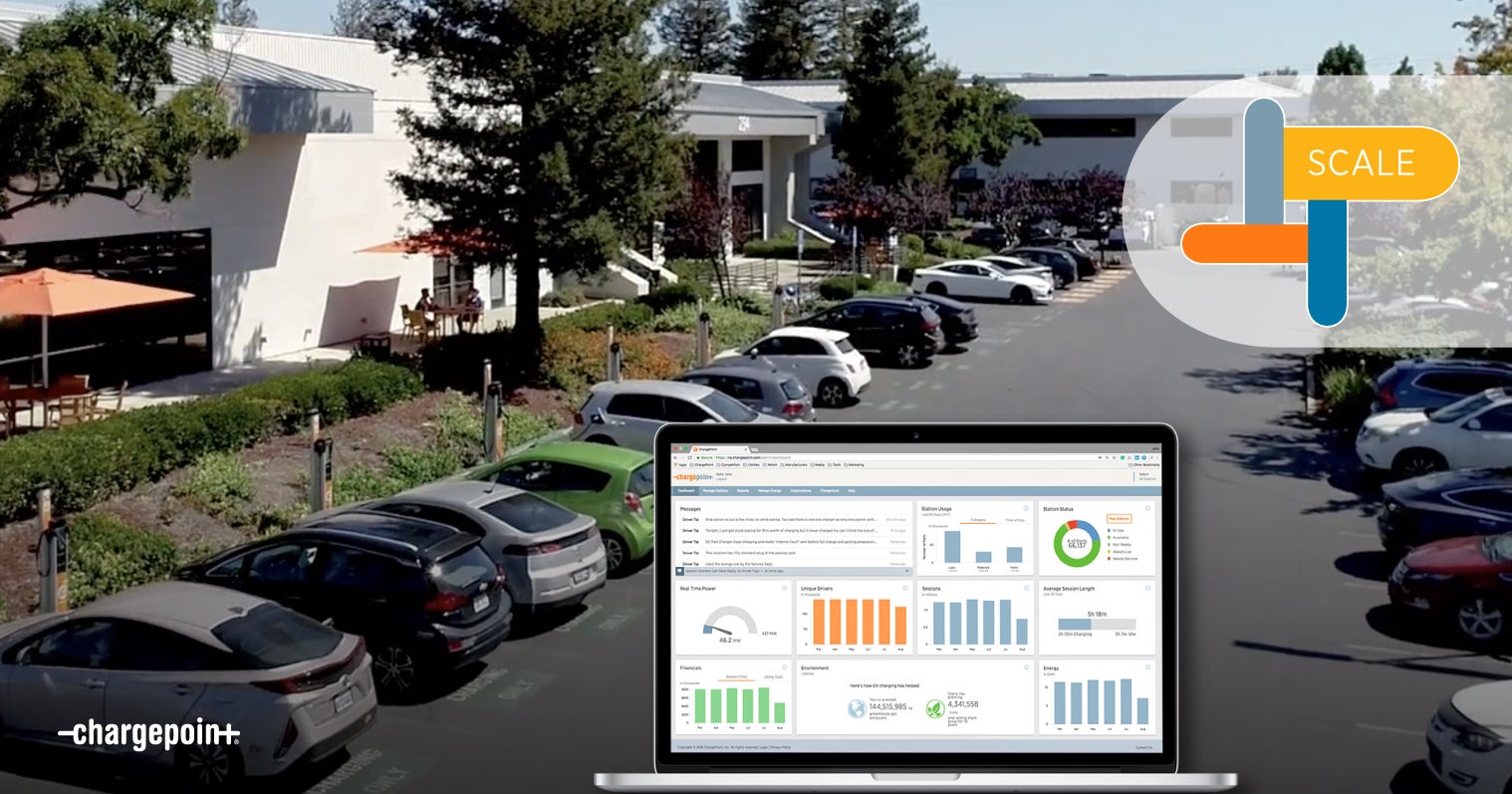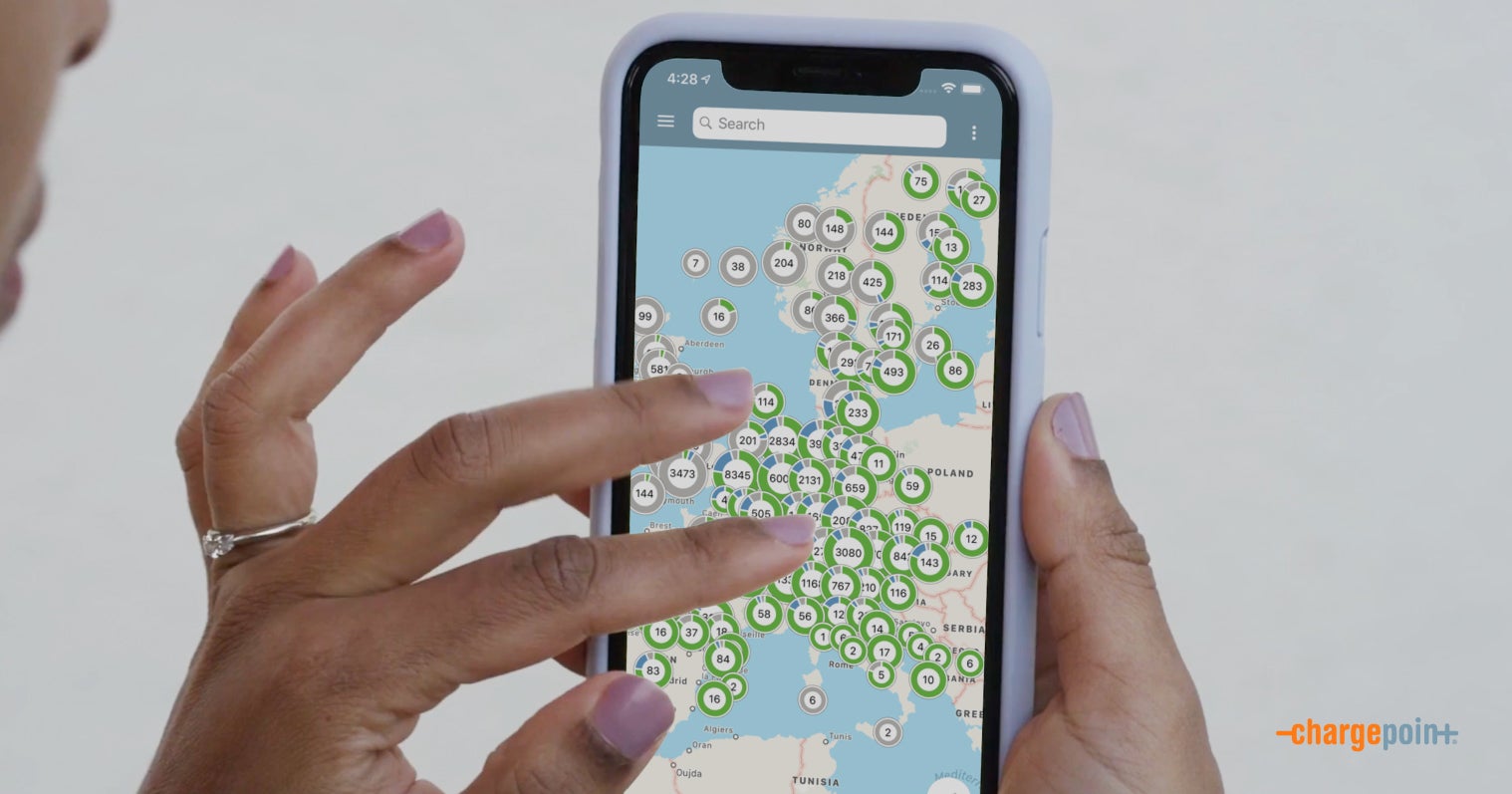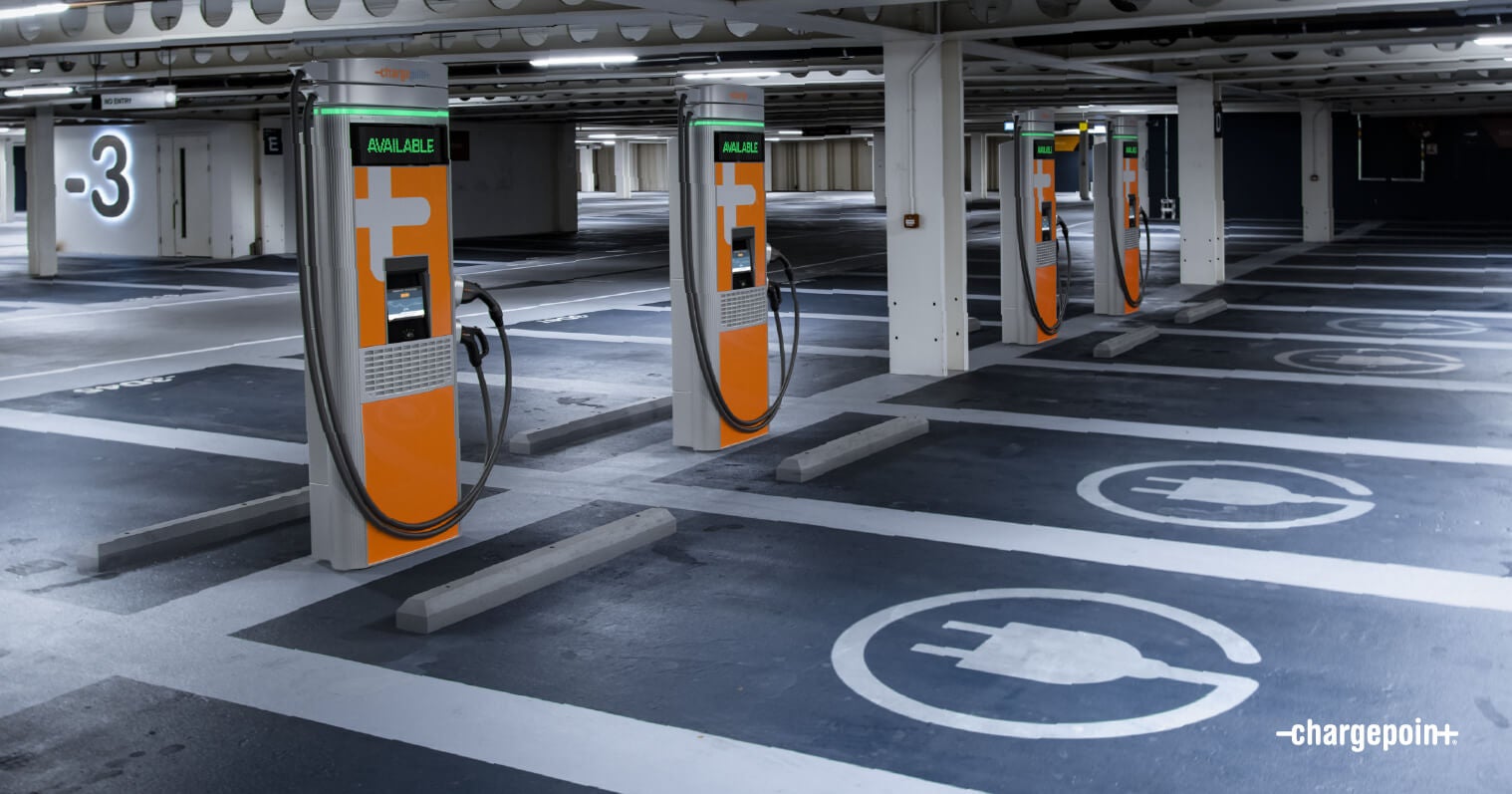
Since we were founded, ChargePoint has stayed focused on a few core principles: a great charging experience, seamless scaling, unparalleled quality and responsive service. These elements are in our DNA, in our solutions and in the mind of every ChargePointer. In this blog series, we explain why these principles are so important to us and how we bring them out into the world through our work. This post addresses the importance of planning to scale your EV charging from the start.
Many companies begin their EV charging journey by installing a few stations to pursue their sustainability initiatives and provide charging to employees, customers or residents who drive electric. While installing a few stations for those drivers is relatively simple, a long-term plan is also needed as more people will inevitably drive electric. With the increasing assortment of fully electric and plug-in hybrid vehicles available, many facilities have not anticipated how fast their parking lots will change and the demand for EV charging will increase. Access to charging makes people much more likely to go electric, so installing just a few stations can accelerate growth in EV drivers and need for charging. Very quickly, the question becomes: how to scale smoothly without added complexity?
ChargePoint knows that software is the key to scaling. From the start, we’ve insisted on networked EV charging for a better experience and simpler scalability. A networked charger means that businesses can use software to apply specific policies about who can access the station and what if any fees are assessed for charging or parking, as well as use an assortment of tools to manage many chargers and many drivers. We've believed in the importance of software since the beginning, and we’ve built the world’s largest EV charging network, with more than 100,000 places to charge and millions of charging sessions each month, by staying focused on the experience and simplicity for both businesses and drivers. Businesses that add more charging have learned that what seemed like a hardware need actually requires a comprehensive networked solution to make their charging programs successful.
There are several important areas where our software enables scaling: station management, pricing, energy management, driver management and vehicle management. Taking a look at each of these areas helps show in more detail how complex EV charging can get and why software is the key to scaling. Whether you plan to use charging in a workplace, commercial environment, multifamily residence or an electric fleet depot, the same principles apply.
Station hardware is just the start
Any EV charging deployment will need to grow to support the increasing number of EV drivers. This growth requires carefully planning both how to deploy additional station hardware and how to maximise the use of your initial hardware through policies and tools administered through software. To enable seamless scaling, we suggest installing additional electrical capacity when you first put stations in the ground. Growth in demand is real, and it’s much more expensive to dig up your car park twice to install more hardware later on.
Software makes EV charging hardware more useful in many ways. It’s what allows EV charging stations to not just show up in the apps that drivers use to search for a place to charge—but show up in the exact right location, with accurate info about whether the station is currently in use. It’s also what lets businesses choose who can charge and when: employees only during business hours and members of the public after hours, for example. Software provides the flexibility to scale.
When it comes to EV charging, the magic number is not the total number of charging spots, but the ratio of EV drivers to charging ports in your environment, such as a workplace or commercial facility. Generally, we suggest aiming for a 4:1 driver:port ratio in high-use scenarios. If you have too many charging spots, they’ll sit unused some of the time. If you don’t have enough, people won’t be able to charge. If you find the sweet spot (or right ratio), you can rely on software to maximise an EV charging investment and satisfy drivers. For example, ChargePoint offers Waitlist, a system allowing drivers to sign up for the next available spot when all stations are in use. Our software enables businesses to activate this feature so drivers can use the mobile app to put themselves in line, get notified when it’s their turn and again when their charging session is complete, freeing up the space for the next driver.

Pricing keeps stations in use
Organisations often want to offer EV charging for free to customers and employees. However, smart pricing policies for EV charging can be extremely effective for enabling the most drivers to have access to EV charging stations. Some solutions may make it possible to charge a flat fee, but we’ve found that it's important to be able to set different fees over time—adding a parking fee after a car is done charging, for example—and for different groups of drivers. You might want to offer charging to employees for free, but charge members of the public a small fee. We can handle all of those pricing configurations; setting up appropriate pricing is helpful to efficient scaling.
Energy can be managed at scale
EV charging hardware has a set cost, but the cost of energy adds up over time, especially for large workplaces, multifamily properties, fast charging locations and fleets. Software is absolutely critical for effective energy management and can encompass a variety of applications, from using Power Management to install more stations at a given electrical supply, to setting a ceiling for overall power use to avoid spikes in demand and expensive utility bills. Our smart network provides real-time data on energy used and tracks cost over time, too. Pricing is another way to recover some of those energy costs.
Keep drivers happy at scale
When it comes to EV drivers, a mobile app is the key. Our app shows drivers everything they need to know: where EV charging stations are, if they’re available, how much it costs to charge and how much energy they’ve added. Easy access to this important information puts EV drivers at ease, validates their choice to go electric and gives them the confidence to travel further. Plus, all our charging works everywhere drivers need it—at home, at work, on a trip and across continental Europe. Without an app to help drivers find them and see their charge, EV charging won’t get used and consequently won’t be worth the investment.
Charge the cars that need it
Electric fleets have among the most complex charging and scaling needs. Fleet managers need to know that their vehicles will be charged and ready when needed. Software lets fleets prioritise certain chargers or vehicles, track the charging status for all vehicles and manage energy and costs overall. Of course, this is also possible for other types of businesses, but fleets have the most pressing needs.
Go global and work with others
Software is what allows EV charging to scale, not just to more charging spots at a single location, but to new cities, counties and even countries as well. Since ChargePoint opened operations in Europe in 2017, we’ve grown to provide access to more than 100,000 places to charge here through our own network and roaming agreements. Without software, we wouldn’t be able to help EV drivers access so many places to charge through our app. Roaming agreements with other networks are another way to scale while delivering a convenient experience for drivers.
Software needs hardware, too
Although roaming experiences can help drivers go more places, it’s ideal for hardware and software to be designed to work together. This delivers a superior user experience and makes it easier to scale. To provide just one example, IT helpdesks have a lower cost to support Macs than computers running Windows, because Macs are designed to work as a seamless system. Similarly, EV charging networks designed hand in hand with software are easier for drivers to use and more efficient for companies to manage.
With integrated systems, there are fewer points of failure and more opportunities to implement more sophisticated features, like Waitlist and Power Management. Taking the time to tie together third-party hardware and multiple software systems can be cumbersome, time-consuming and less powerful. We make it seamless from the start.

Much like trying to get through an IKEA store backwards, skipping the software step just doesn’t work for EV charging. Everything has to start with the software, how it will be managed and how drivers will use it. Without these details, individual businesses and EV charging networks simply can’t scale.
Quality is also vital to scaling—without quality, there’s no point in growing larger. Next up, we’ll discuss the importance of intensive quality assurance and testing to EV charging.
